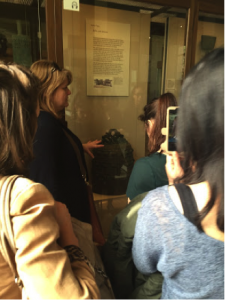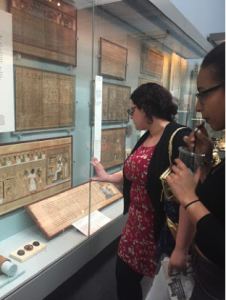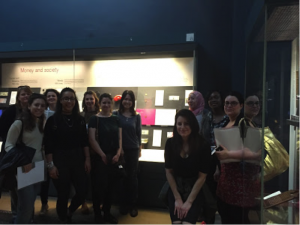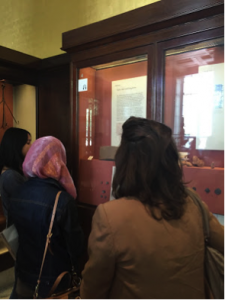This post was written by Sophie Bannister, LLM student doing the International Commercial Law stream.
When one thinks of the purpose of a museum similar ideas may come to mind, such as; to learn about history and to appreciate different cultures – the similar theme being for a historical, educational purpose. This was the first question we were asked on the day at the museum and very similar answers resulted. One thing many will not think of when visiting a museum is the law surrounding each object and artefact no matter how big or small, how old or how new.
I remember as an undergraduate, the first essay I ever wrote was entitled “what is law” and obviously the first place I turned to was the Oxford Dictionary and placed their definition straight into my essay and from that incision went down a very clinical route of defining what I thought law was (or should be). Through my years of studying law, I have come to discover and realise that law is all around us and is continuously at play in our day to day lives whether we notice it or not.
Truly enough each item we visited not only had a history but had a legal history which could be carried forth to present day. Both students and teachers had the opportunity to select objects to look at and in turn had the chance to explain the relevance of the law (or how they perceived its relevance to law) in relation to the object. With some objects, such as the Pillar of Ashoka, a free standing pillar with inscriptions of what one could call a ‘moral code’; one can immediately see its legal relevance. The writing of policies, rules and regulations for citizens to follow is something we see today in statutes, constitutions and conventions all across the globe.
Other objects at first sight may appear to have nothing to do with law, but in digging deeper it becomes clear that there is a legal history to them too. Take for example the Bronze bell which was viewed, in ancient China these bells were regularly used for musical purposes at court ceremonies and rituals, but at closer inspection we see the law when we look at the classes of people who were ‘allowed’ to hang these bells and how many bells they were ‘allowed’ to hang. Once again we see this rule structure and allowances, based in the laws of the land, existing in present day.

If I had to highlight an object of the day, which I personally thought depicted law in the clearest way, I would have to choose Jodie’s object which was a page from the Book of the Dead of Hunefer. This was undoubtedly my favourite object of the day, not only were the illustrations beautiful but the scene, which dates back to 1275BC, is a perfect demonstration of how even though law has changed over time based on societal needs, the fundamental principles have been in existence since time immemorial. The page depicts the basic principles of a trial; Judge, jury, executioner, stenographer, ombudsman and upon close inspection the scales of justice are present.

The overall experience was one that truly gave us a break from what we see as typical law elements and gave us the opportunity to look at historical objects and artefacts and find law within them, around them and amongst them.



